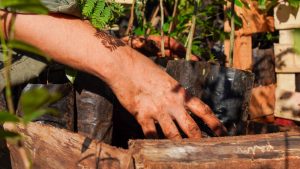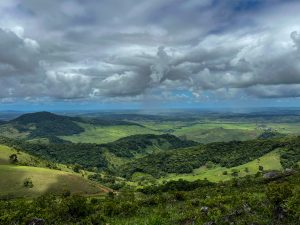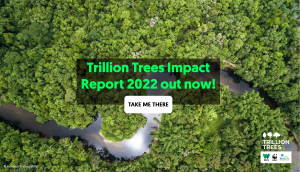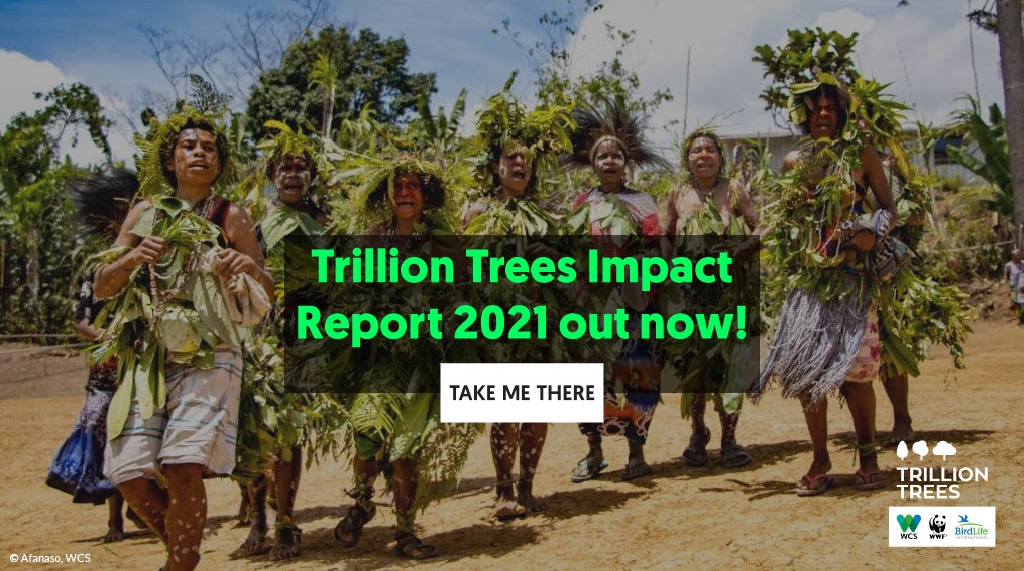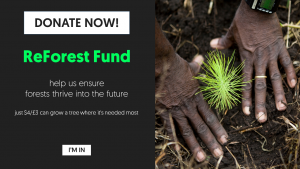New research aims to transform how forest restoration programmes are costed
Protecting and restoring the world’s forests is a fundamental part of what we need to do in the fight against climate change – but the world is in danger of underestimating the cost and potentially setting projects up for failure.
Increasing evidence shows that many large forest restoration programmes are vastly under-budgeted, leading to overestimations of the area of forest potentially restored[1] and a dramatically increased risk of failure. If this happens many forest restoration projects may not deliver the critical outcomes needed to help safeguard the planet and our future.
Trillion Trees, a joint venture between BirdLife International, the Wildlife Conservation Society (WCS) and WWF focused on protecting and restoring the world’s forests, is tackling this issue through new research to establish a realistic, experienced-based calculation of the investment needed to deliver high-quality, sustainable forest restoration, grounded in globally-accepted forest and landscape restoration principles.
The need is urgent as up until now, the focus on individual trees has commodified the act of tree planting, with organisations offering to plant for “$1 per tree” or less. The result has meant a focus on tree numbers alone, and often doesn’t include making sure those trees planted actually survive.
In a white paper published today, ‘Defining the Real Cost of Restoring Forests: practical real-world steps towards improving cost estimates’, Trillion Trees sets out five considerations for effectively costing forest restoration. These include careful planning, ensuring local participation and local knowledge, through to monitoring outcomes and developing local capacity. Trillion Trees will be categorising, documenting and quantifying real-world data on costings from its partnership programming and invites others with experience in forest restoration to contribute data and views. John Lotspeich, Executive Director of Trillion Trees, said “The global interest in tree planting has brought attention to the fact we have to restore the world’s forests at a huge scale to have a hope of fighting the effects of climate change. But trees aren’t forests, and it is forests that deliver the climate, natural and even human stability that can most effectively avert the looming climate and biodiversity disasters. Forest restoration must be done in the right way, where trees grow and survive for decades to come. This takes time and resources, and that costs more than $1 a tree.
Lotspeich continued, “This is why we are addressing the urgent need for better cost estimates and undertaking research to establish a realistic calculation of the investment needed to ensure efforts are long-term, sustainable and meaningfully contribute to achieving the ambitions of the Paris and Glasgow Agreements. And we welcome contributions from others in this endeavour.
Ultimately, we need investors to come to the table who realise that a healthy planet is a return on investment in itself.”
The five budget considerations for effective projects outlined are:
- Account for planning: Clearly define the project objectives and appropriate intervention strategies
- Consultation and planning with all relevant stakeholders
- Account for participation and privilege local knowledge
- Ensure Free Prior and Informed Consent (FPIC) can be demonstrated
- Active involvement of local stakeholders in planning, decision-making, coordination and implementation
- Account for different interventions within the same landscape
- Consider the differences betweeninterventions that can produce economic returns, as well as those that are purely for biodiversity or carbon sequestration
- Recognize that working well with communities requires time and investment to respect and, where possible, integrate local knowledge
- Account for site preparation and ongoing maintenance
- Account for the aftercare and on-going management of planted/restored areas
- Account for the potential future climate risks (e.g., drought, fire)
- Account for monitoring outcomes, assessing progress and developing local capacity
- Each target or objective should be supported with an approach to monitoring that considered short-term progress and long-term outcomes
- Indicators or metrics should be carefully selected and tailored to project objectives and outcomes,[2] including local capacity-building
Download ‘Defining the Real Cost of Restoring Forests,’ a Trillion Trees white paper here
Interested parties can contact Trillion Trees for further information at action@trilliontrees.org
[1] Bodin, B., Garavaglia, V., Pingault, N., Ding, H., Wilson, S., Meybeck, A., ... & Besacier, C. (2021) A standard framework for assessing the costs and benefits of restoration: introducing The Economics of Ecosystem Restoration (TEER). Restoration Ecology, e13515.
[2] Oakes, LE, St-Lauren, GP, Cross, MS, Washington, T, Tully, E, and Hagerman, S (In Press) Strengthening monitoring and evaluation of multiple benefits in conservation initiatives that aim to foster climate change adaptation. Conservation Science and Practice, 4, e12688.


